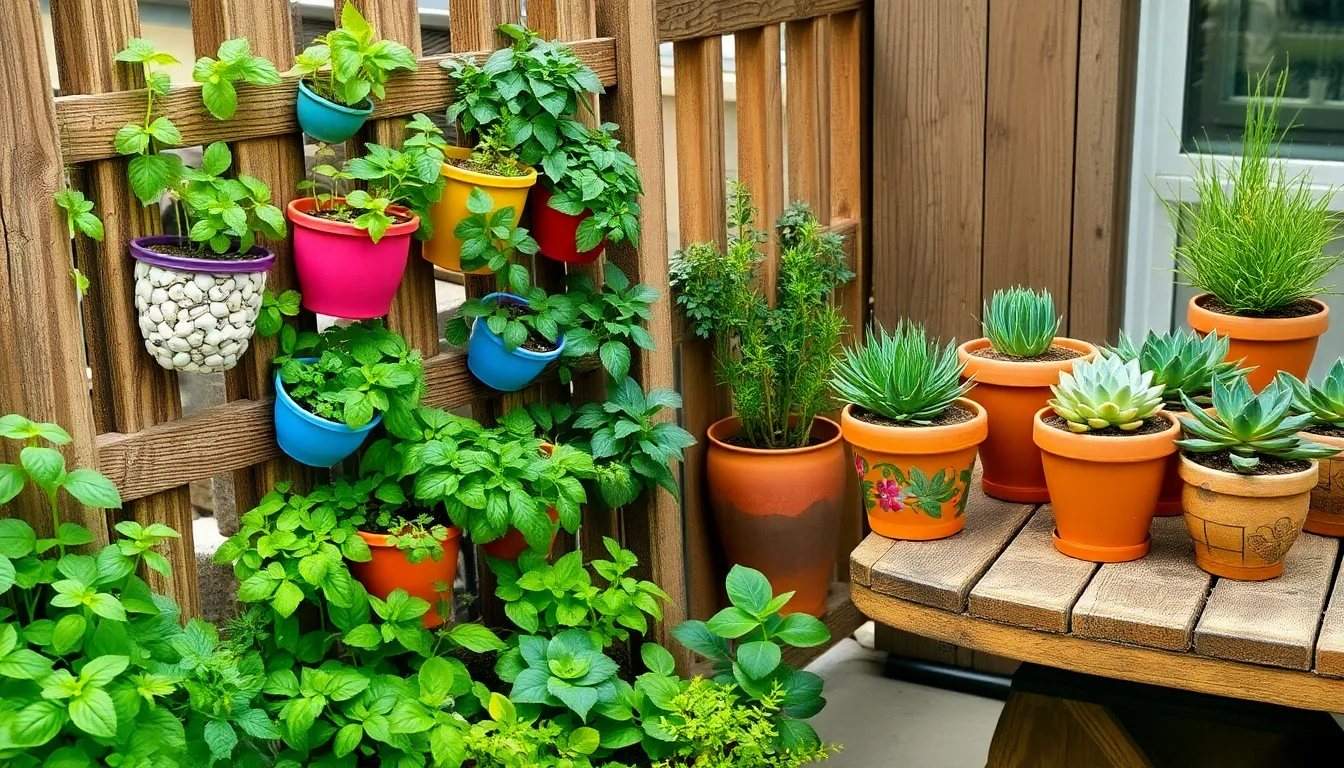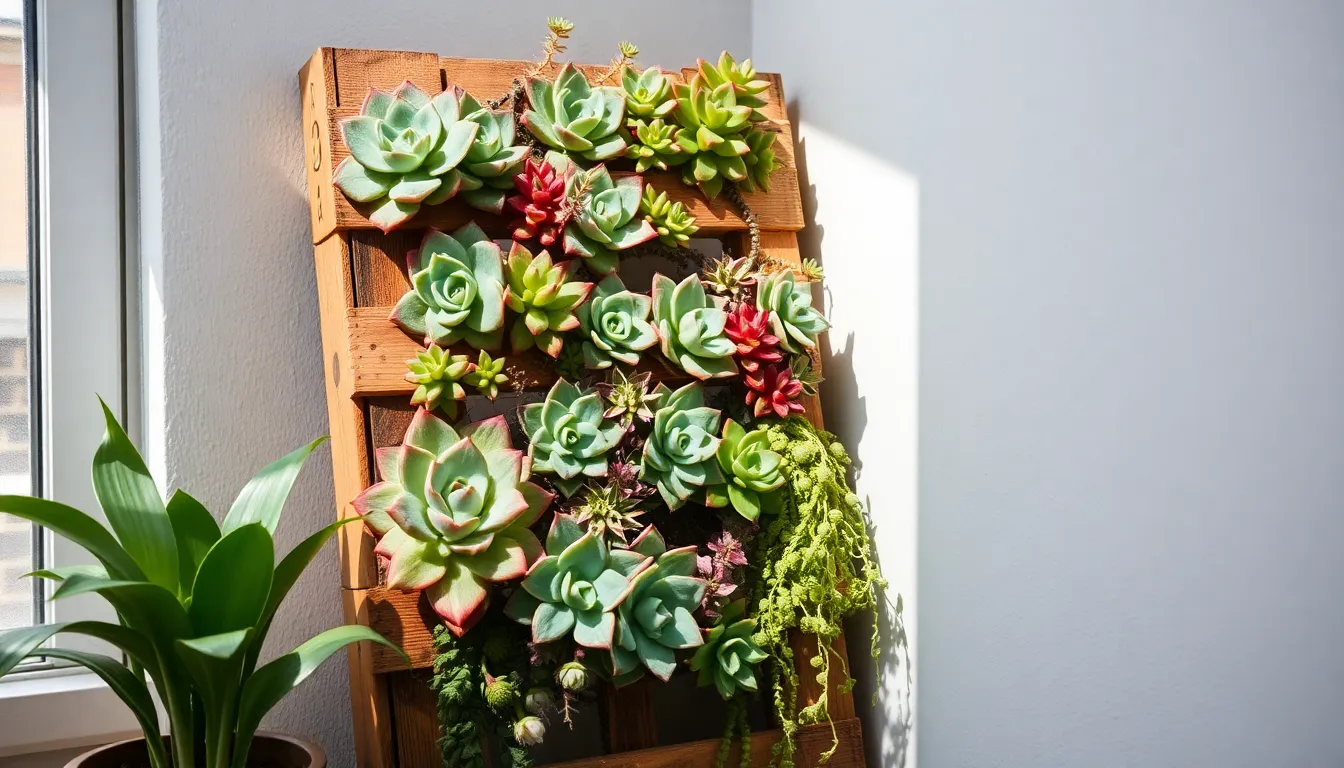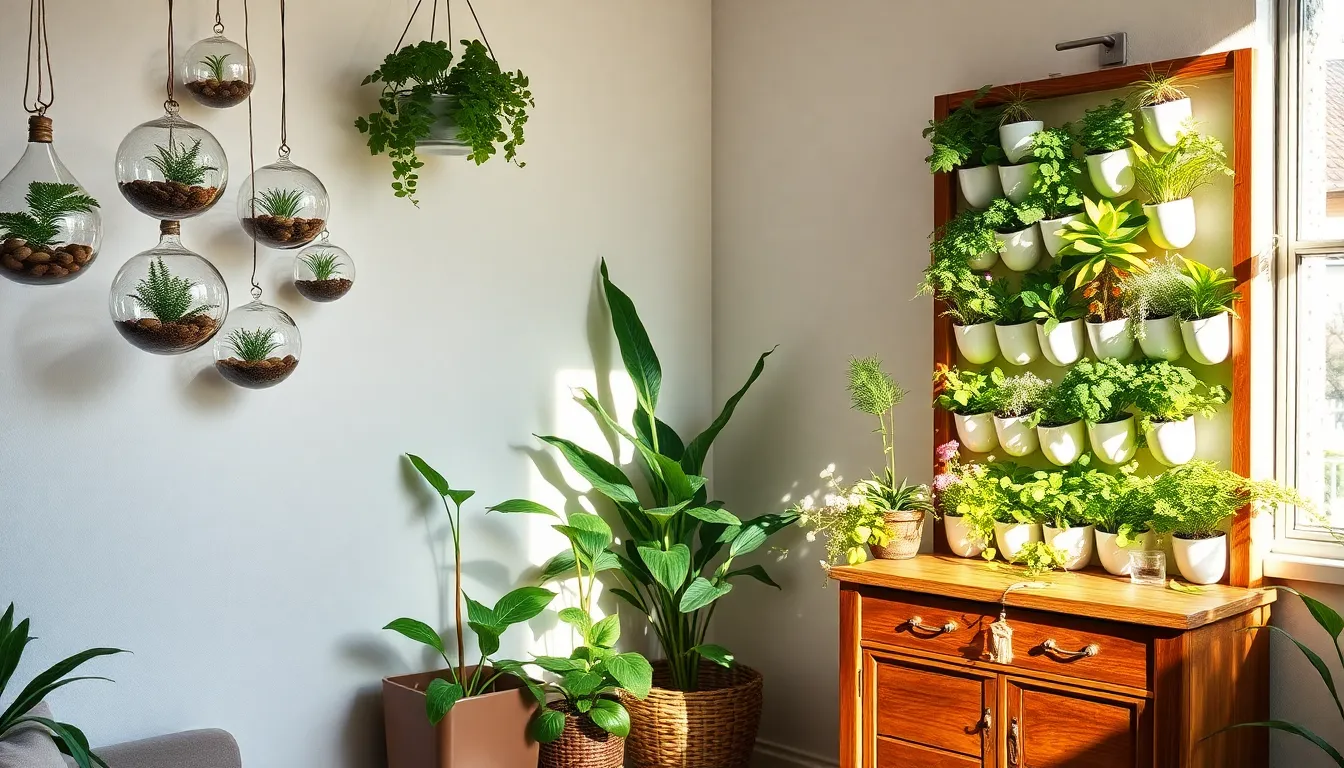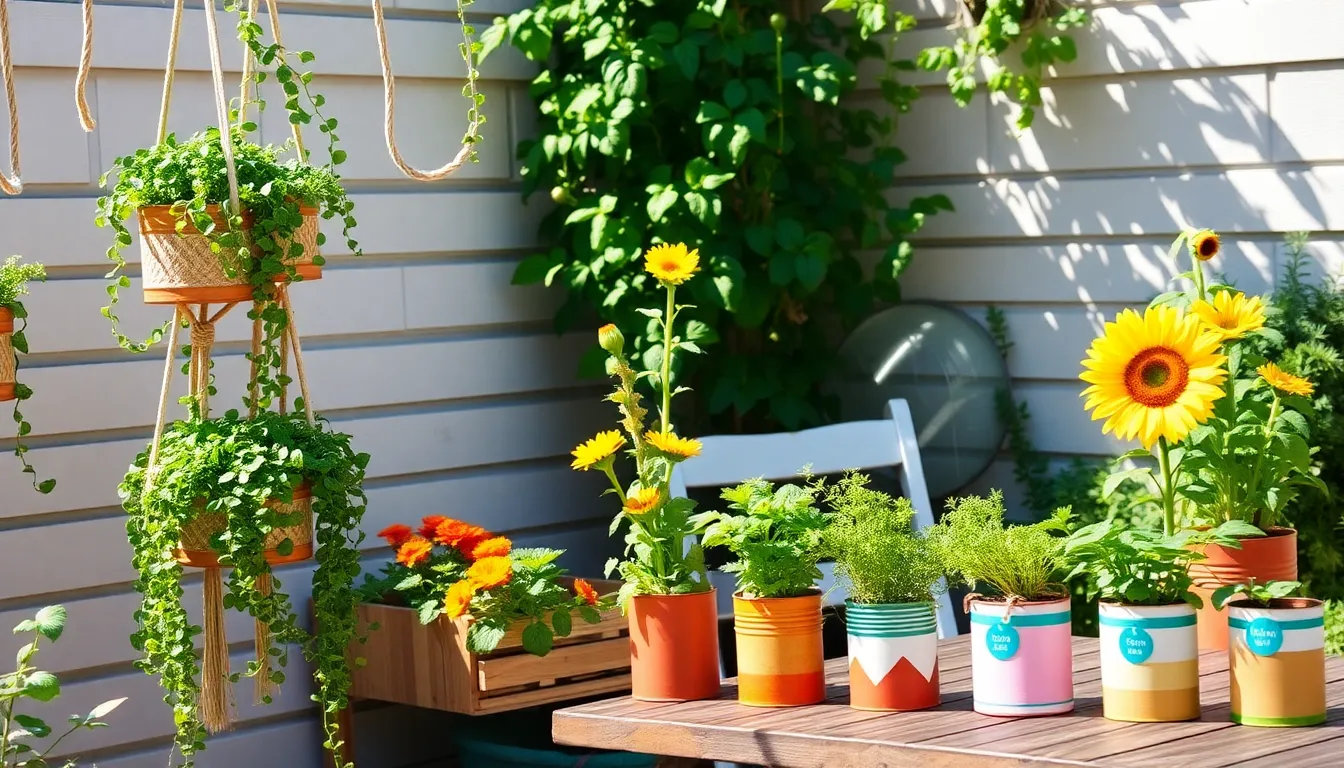In the bustling heart of the city, where skyscrapers loom and green spaces are precious, creating a small urban garden is a delightful way to bring a touch of nature right to your doorstep. Whether you’re a seasoned gardener with years of experience or a curious beginner eager to nurture your first plants, the art of urban gardening offers a unique opportunity to transform even the smallest spaces into lush, vibrant oases.
As we delve into this rewarding endeavor, you’ll learn how to maximize limited space, select the perfect plants for your environment, and create a thriving garden that suits your style and needs. By the end of this guide, you’ll be equipped with practical tips and creative ideas to start your own verdant retreat, turning concrete corners into flourishing gardens.
Urban gardening is not only about growing plants; it’s about cultivating a personal sanctuary amidst the urban hustle. With this guide, you’ll discover how easy it is to weave greenery into your daily life, enriching your home with beauty and tranquility, all while contributing to the environment.
Assess Your Space and Light
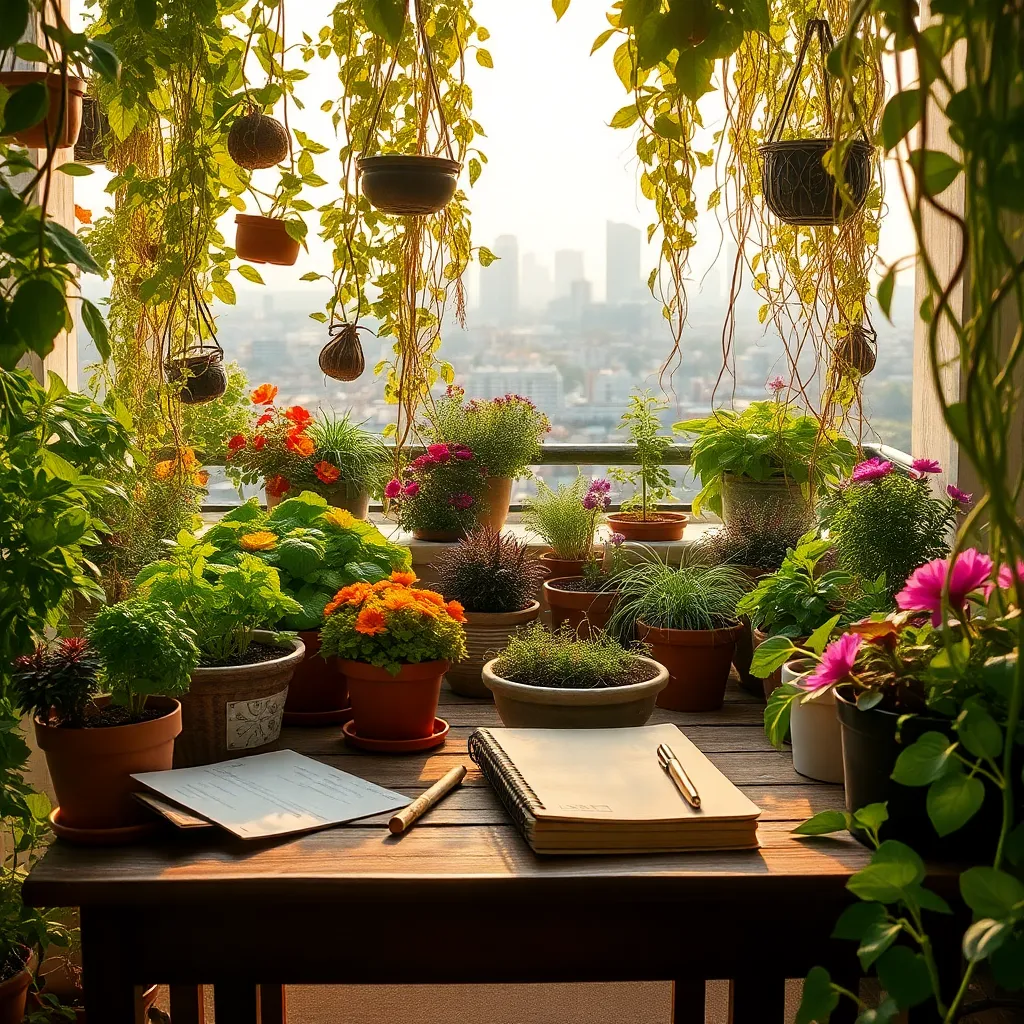
To begin, observe the amount of natural light your space receives throughout the day. Note the patterns of sunlight and shade, as this will help you choose plants that thrive in those specific conditions.
If your urban garden is mostly shaded, consider selecting shade-tolerant plants like ferns or hostas. For sunny spots, opt for sun-loving plants such as tomatoes or marigolds, which thrive in bright conditions.
Measure the available space to determine what type of containers or raised beds you can accommodate. Consider vertical gardening solutions like wall planters or trellises to maximize limited space.
For beginners, starting with easy-to-grow plants like herbs or salad greens can provide quick success and build confidence. More experienced gardeners might explore container fruit trees or dwarf varieties for an added challenge and reward.
Select Suitable Containers
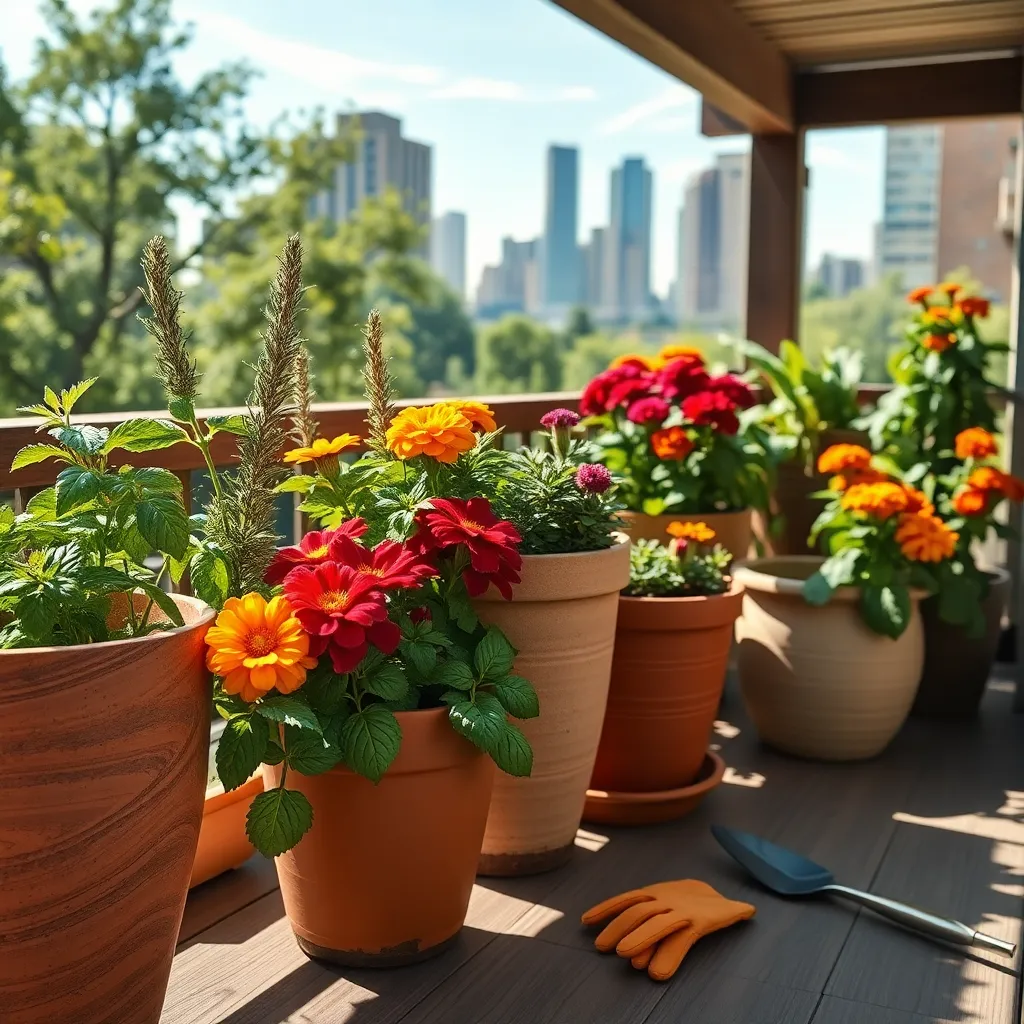
When selecting containers for your urban garden, consider both the size of your plants and the available space. It’s essential to choose containers with adequate drainage holes to prevent waterlogging and root rot, ensuring healthy plant growth.
Material is also a key factor; containers can be made from plastic, terracotta, or metal. Plastic pots are lightweight and retain moisture well, making them ideal for hot climates, while terracotta pots are porous and provide excellent air circulation to roots.
Remember that container size will influence plant growth; small pots restrict root development, while larger ones support extensive root systems. For beginners, starting with medium-sized containers (10-14 inches in diameter) can provide a good balance for various plants, from herbs to small vegetables.
Advanced gardeners might explore self-watering containers, which reduce the need for frequent watering and help maintain consistent soil moisture. These containers are perfect for busy urban dwellers who want to ensure their plants receive optimal care even when they’re not around daily.
Choose Compact Plant Varieties
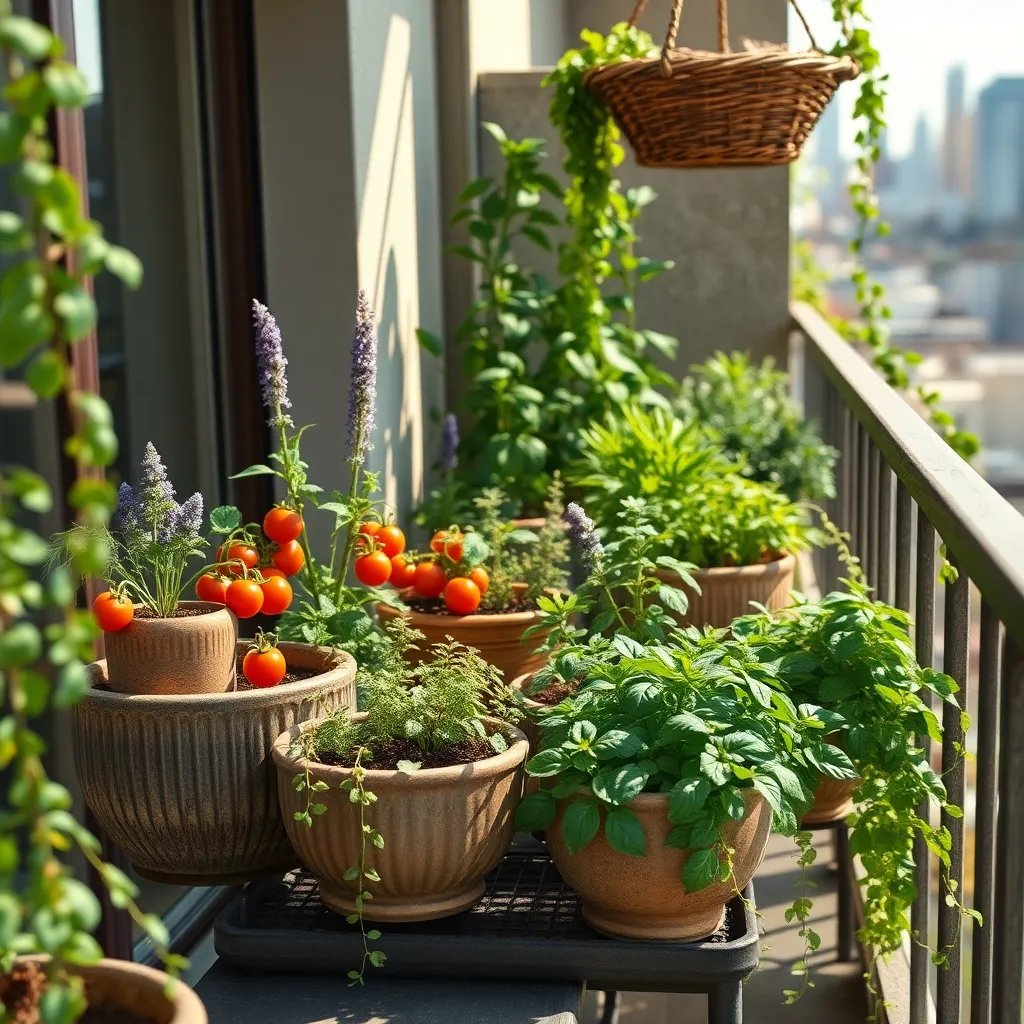
In a small urban garden, choosing compact plant varieties can make a significant difference in maximizing your space. Opt for plants that are naturally smaller or have been bred to grow in a compact form, such as dwarf vegetables or miniaturized herbs.
Varieties like ‘Patio Princess’ tomatoes or dwarf zucchini offer the same great taste as their larger counterparts but require far less room to thrive. These plants often need less soil, making them ideal for container gardening.
Consider selecting compact flowers like marigolds or petunias, which not only brighten your space but also attract beneficial pollinators. These plants are easy to manage and can be planted in small pots or hanging baskets.
Another excellent choice is compact berry bushes like ‘Top Hat’ blueberries, which are perfect for growing on balconies or small patios. Ensure they receive ample sunlight and use a balanced fertilizer to support their fruit production.
Use Quality Potting Mix
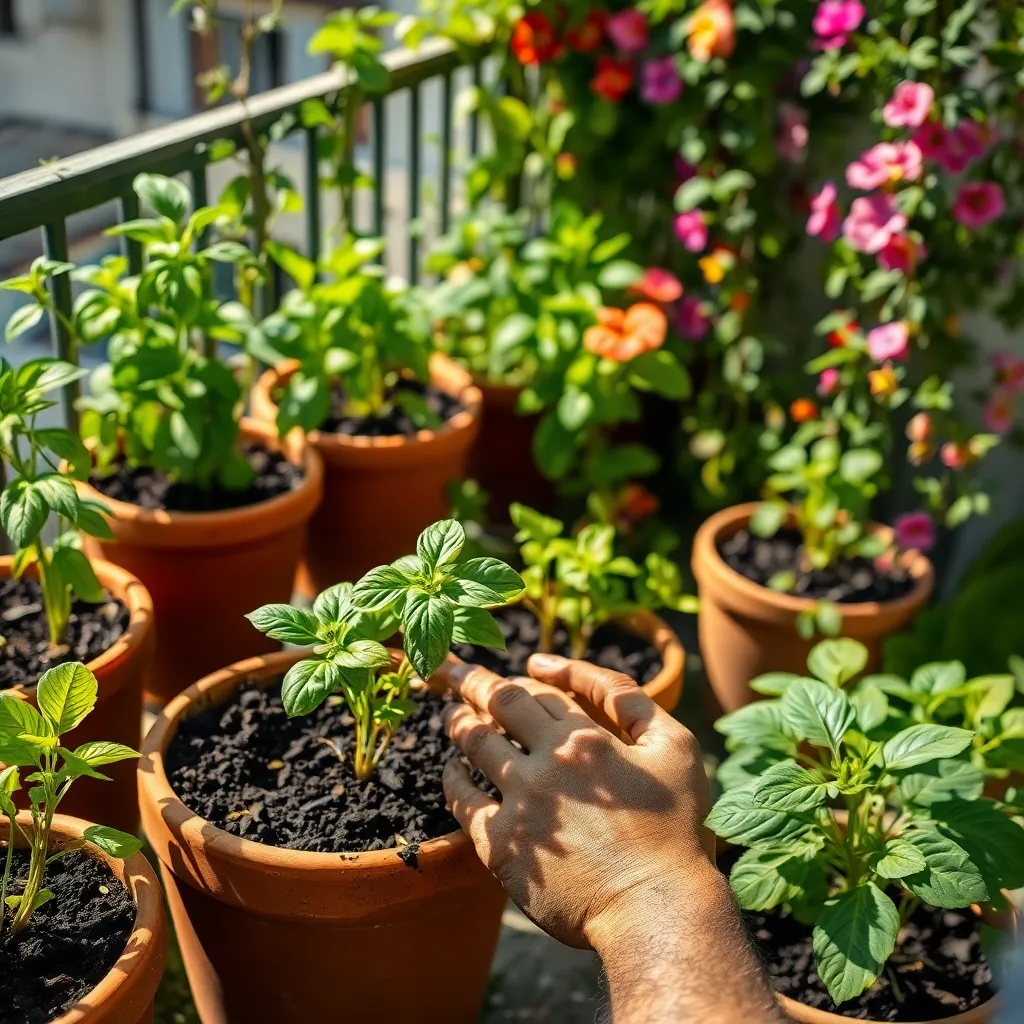
To ensure your urban garden thrives, using a quality potting mix is crucial. A well-balanced mix provides the necessary nutrients, drainage, and aeration that plants need to grow strong and healthy.
Look for a potting mix containing peat moss, perlite, and vermiculite to ensure good water retention and drainage. These components create a lightweight medium that supports root development and prevents compaction.
For beginners, choosing a pre-made potting mix labeled for your specific plant types can simplify the process. If you’re more experienced, consider customizing your mix by adding ingredients like compost or worm castings to boost nutrient levels.
Remember to refresh or replace your potting mix every year or two, as it can lose nutrients and structure over time. Regularly checking the moisture level and adjusting your watering schedule based on your mix’s drainage will help maintain plant health.
Implement Efficient Watering System
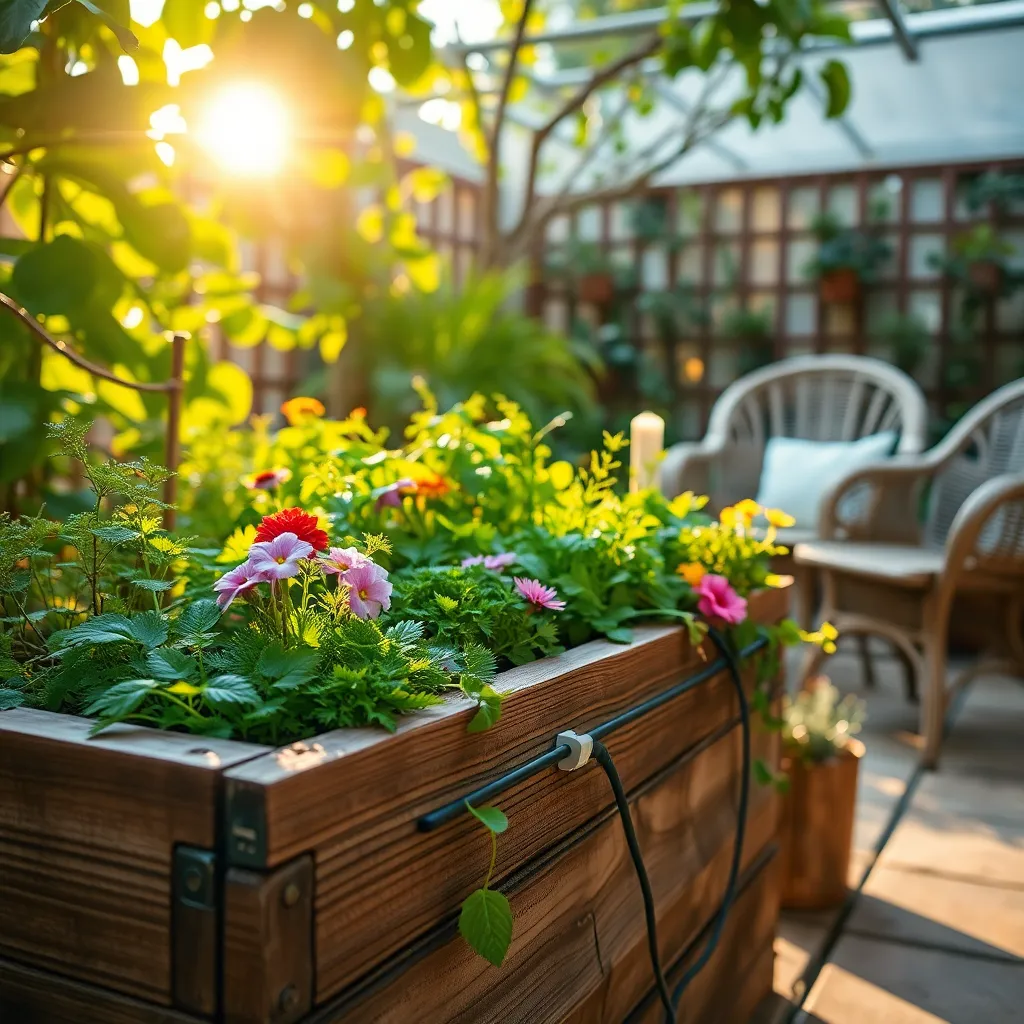
To ensure your small urban garden thrives, it’s important to implement an efficient watering system. Using a drip irrigation system can help deliver water directly to the roots, minimizing waste and promoting healthier growth.
Customizing your watering schedule is crucial for different types of plants. Vegetables typically require more water than succulents, so consider grouping plants with similar watering needs together.
Invest in a timer for your irrigation system to automate watering and reduce your workload. This not only saves you time but also helps maintain consistent moisture levels, which can be vital for plant health.
For beginners, a simple soaker hose can be an excellent starting point. Lay it around your plants to ensure even water distribution without the need for manual watering.
Advanced gardeners might explore installing a rainwater harvesting system to make their garden more sustainable. Collecting rainwater not only reduces your water bill but also provides plants with naturally soft water, which they often prefer.
Finally, regularly check your watering system for clogs or leaks. This ensures that every plant receives the right amount of water, and your system remains efficient and durable over time.
Conclusion: Growing Success with These Plants
In the vibrant tapestry of urban gardening, we’ve explored five key concepts that mirror the nurturing of healthy relationships: the importance of laying a solid foundation with quality soil, the patience required to allow your garden—and your relationship—to flourish, the necessity of consistent care and attention, the benefits of diversity and adaptability, and the joy of reaping shared rewards. Each of these principles not only cultivates a thriving garden but also strengthens the bonds with loved ones around us.
As an immediate next step, consider selecting a small space in your home or apartment to begin a simple plant project. This act can serve as a metaphorical and literal reminder of the care every relationship deserves.
I encourage you to bookmark this article as a resource for both your urban gardening journey and your relationship growth. Let it be a reminder that with dedication and love, both your garden and personal connections can thrive amidst the hustle and bustle of urban life.
Remember, the seeds you plant today can bloom into a future filled with flourishing relationships and rich, green spaces. Embrace the process, and watch your efforts blossom into lasting success.

